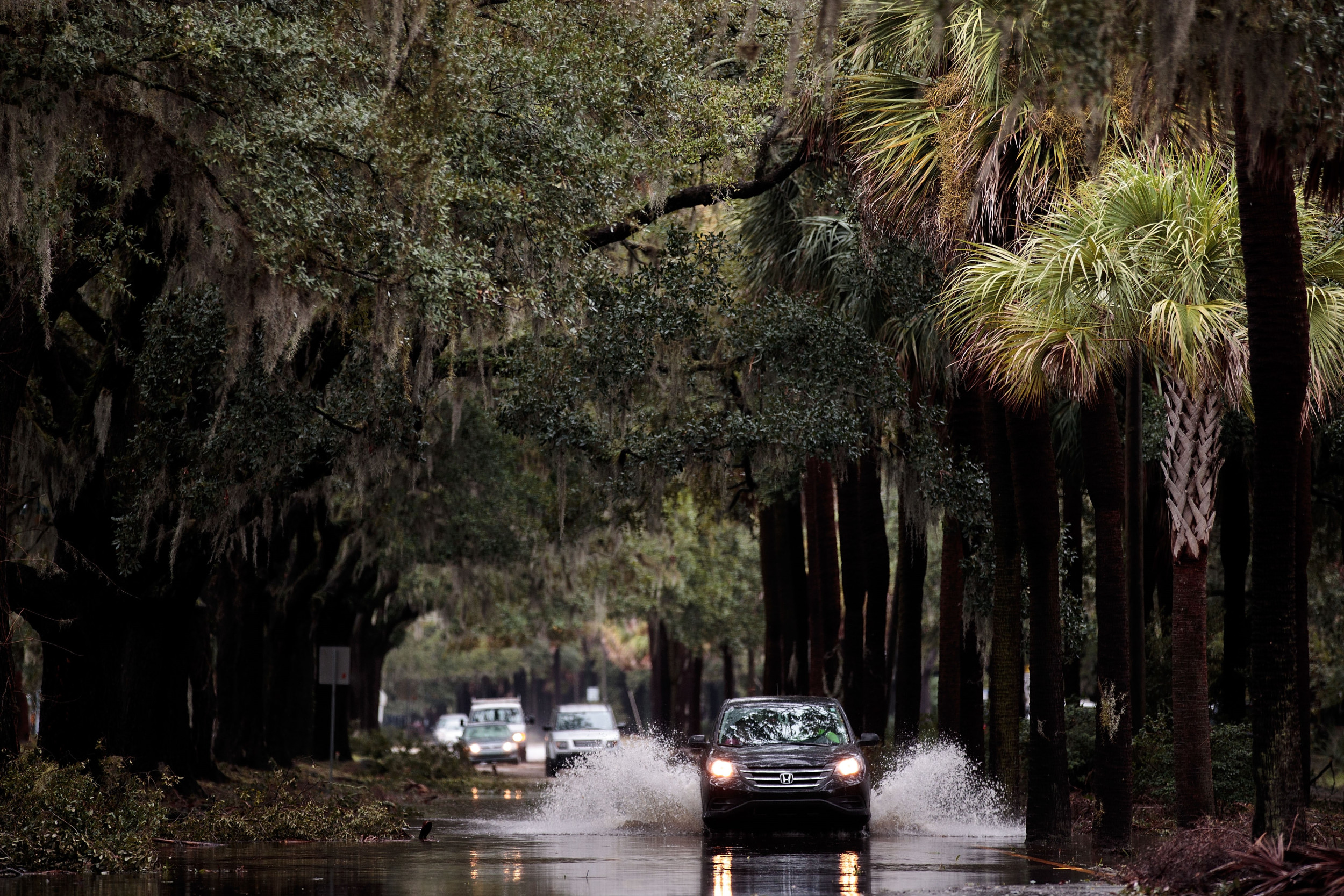Residents bracing for Hurricane Debby to hit the United States this week will have to contend with more than just fierce winds as meteorologists warn that “record-breaking” rainfall of up to 30 inches is forecast.
The weather system is due to hit Florida’s Big Bend region at around midday on Monday, although winds were already building and causing damage to homes in the early hours.
The deluge due to be dumped by Debby, which has been designated as a Category 1 hurricane (meaning winds may hit up to 95 miles per hour), is also set to usher in “life-threatening flash flooding” in northeast South Carolina and southeast North Carolina, according to the National Weather Service (NWS).
The sheer amount of rain due to fall in some parts by Friday may be unprecedented. The director of the National Hurricane Center, Michael Brennan, warned Georgia and South Carolina to prepare for potentially “record-breaking rainfall” of up to 30 inches.
“There’s some really amazing rainfall totals being forecast—and amazing in a bad way,” Brennan said. “That would be record-breaking rainfall associated with a tropical cyclone for both the states of Georgia and South Carolina if we got up to the 30-inch level.”
According to U.S. Climate Data, which compiles national statistics from various sources, Savannah, Georgia, receives 47.96 inches of rain per year on average. That means the city could be lashed by more than half a year’s rainfall within just a few days.
Drew Angerer/Getty Images
Savannah Mayor Van R. Johnson told CBS News that 30 inches of rain simply “means obliteration for a lot of our city.”
“It is forecast to be a historic event for Savannah. We’ve heard words like ‘unprecedented’ and ‘historic,’ and those are the types of words that concern me. Even they [the NWS] seem amazed at the amount of water that is coming because of this storm,” Johnson said.
“We can handle storm surges, and we work well with wind gusts, but the issue of water and flooding in a low-lying community—it just creates all kinds of problems.”
He continued: “I’m concerned about our homeless and individuals who have a hard time in life anyway. It keeps me up at night. In a city that’s been around 292 years and has seen it all, we have not really seen this.”
#Debby will drop A LOT of rain over the next few days.
Potentially historic, heavy rainfall is forecast across southeast Georgia and South Carolina through Friday morning. This may mean areas of catastrophic flooding.
Prepare now for this possibility and follow your local NWS… pic.twitter.com/NIMsHo3Exa
— National Weather Service (@NWS) August 4, 2024
Florida will feel the full force of the hurricane before it stalls over the coastal regions of Georgia and South Carolina, and North Carolina is also expected to suffer some unpleasant weather as a result. The NWS has shared forecasts and warnings on X (formerly Twitter) and says that some areas may see “catastrophic flooding.”
Residents should follow NWS’s local weather reports for the most up-to-date information.
The weather system is the fourth named storm of the 2024 Atlantic hurricane season, following Tropical Storm Alberto, Tropical Storm Chris, and Hurricane Beryl, all of which formed in June.
Hurricane Beryl caused at least $3.3 billion in damage across the U.S., the Caribbean, and Mexico. It was downgraded to a Category 1 storm by the time it made landfall in the U.S., where it killed six people in Texas and one in Louisiana.
